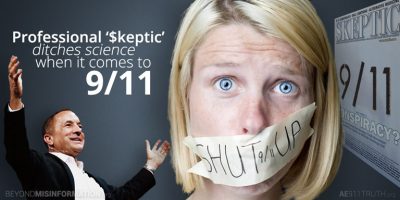The 9/11 Anniversary: “Conspiracy Theory” or Critical Thinking? “Eight Points to Ponder” by Graeme MacQueen
There should be no stigma attached to questioning the official account of what happened 17 years ago.

Important article by the late Graeme MacQueen. His Legacy will Live. First published on September 22, 2018
On the 23d anniversary of the 9/11 attacks, the public has a right to ask what really happened on that day.
Here are eight points to ponder.
1. Questioners of the official account of 9/11 are often dismissed as “conspiracy theorists,” but this makes no sense. A conspiracy is just a secret plan, by two or more people, to commit a criminal or immoral act. The 9/11 attacks obviously involved a conspiracy.
2. Some people think that the truth of the official account blaming al-Qaida is obvious to every sane person. Not true. Polls suggest that less than half the world’s population shares this confidence.
3. If Bin Laden was the criminal mastermind, why didn’t the FBI charge him with the crime? In 2006 an FBI spokesperson explained: the Bureau had no hard evidence connecting him to 9/11.
4. Questioners of the official account of 9/11 are not all woolly-minded bloggers. Many have relevant expertise. Winner of the National Medal of Science in the U.S., Lynn Margulis, said the science supporting the official account is appallingly weak. Over 3,000 credentialed architects and engineers have publicly expressed dissatisfaction with the official account of the destruction of the World Trade Center.
5. In 2006, a peer-reviewed article revealed that 118 members of the Fire Department of New York reported witnessing explosions during the collapse of the Twin Towers. Patterns of explosions were witnessed, going around as well as up and down the buildings. This challenged the official claim that the buildings were brought down by plane impact and fires. It suggested controlled demolition.
6. In 2009, another peer-reviewed article reported the discovery of large quantities of an exotic explosive and incendiary (nanothermite) in the dust of the World Trade Center. The samples were collected before the cleanup of the site began. This supported the demolition hypothesis.
7. The National Institute of Standards and Technology, given the task of accounting for the World Trade Center destruction, failed to explain to the satisfaction of many scientists the total collapse of a third skyscraper on 9/11, 47-storey World Trade Center 7. No plane hit this building, yet at 5:21 p.m. down it went, beginning its descent symmetrically, suddenly, and at free fall acceleration. Everything about this collapse suggests demolition.
8. In April 2018, eight lawyers filed a petition with the U.S. Attorney for the Southern District of New York. The petition offers detailed evidence that the Trade Center was destroyed by explosives and it demands that this evidence of a federal crime be submitted to a grand jury, with the ultimate aim of charging those responsible.
Clearly, there should be no stigma attached to the questioning of the official account of 9/11. Readers wishing to know more may consult the petition of the Lawyers’ Committee for 9/11 Inquiry and the findings of the international 9/11 Consensus Panel, both of which can be found on the internet.
Note to readers: please click the share buttons above. Forward this article to your email lists. Crosspost on your blog site, internet forums. etc.
This article was originally published on The Hamilton Spectator.
The Late Graeme MacQueen was the former director of the Centre for Peace Studies at McMaster University. He was a member of the 9/11 Consensus Panel, former co-editor of the Journal of 9/11 Studies, and an organizer of the 2011 Toronto Hearings, the results of which have been published in book form as The 9/11 Toronto Report.
He was a Research Associate of the Centre for Research on Globalization (CRG)

